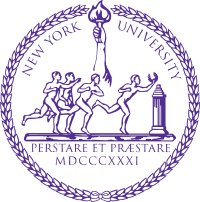Columbia / Courant Joint Probability SeminarColumbia University, Friday March 2, 2018. |


|
||||||||||||
Speakers
|
||||||||||||
Schedule
|
||||||||||||
| Practical Information
The talks will take place at Columbia University Mathematics building in Room 520, on March 2, 2018. No registration necessary. Directions to Columbia. For further information, please contact the organizers. |
||||||||||||
| Titles and Abstracts Ruojun Huang (NYU) A random growth model in Rn related to cookie random walks Abstract: We consider a general random growth model in Euclidean n dimensional space that captures some of the features of several processes that have been considered previously in their lattice version, but is particularly motivated by "excited towards the center" random walk for which a shape theorem has been conjectured. We prove a hydrodynamic limit via an averaging principle that leads to a shape theorem. The limiting shape can be computed explicitly in terms of the invariant measure of an associated Markov chain. Based on joint work with Amir Dembo, Pablo Groisman, and Vladas Sidoravicius. Greg Lawler (UChicago) The two-sided loop-erased random walk Abstract: A loop-erased random walk (LERW) is obtained from a simple random walk by erasing the loops chronologically. LERW also appear as paths in uniform spanning trees. I construct the two-sided LERW for all dimensions. This can be considered as the distribution of LERW as seen "from the middle" or can be considered as the path going through the origin of a uniform spanning tree "conditioned that the path has two sides". Russell Lyons (Indiana University) Comparing return probabilities Abstract: Consider a Cayley graph of a group, Γ. Suppose that W is a random assignment of nonnegative numbers to the edges and that the law of W is Γ-invariant. Let Xt be continuous-time random walk on Γ in the random environment W: incident edges |
||||||||||||